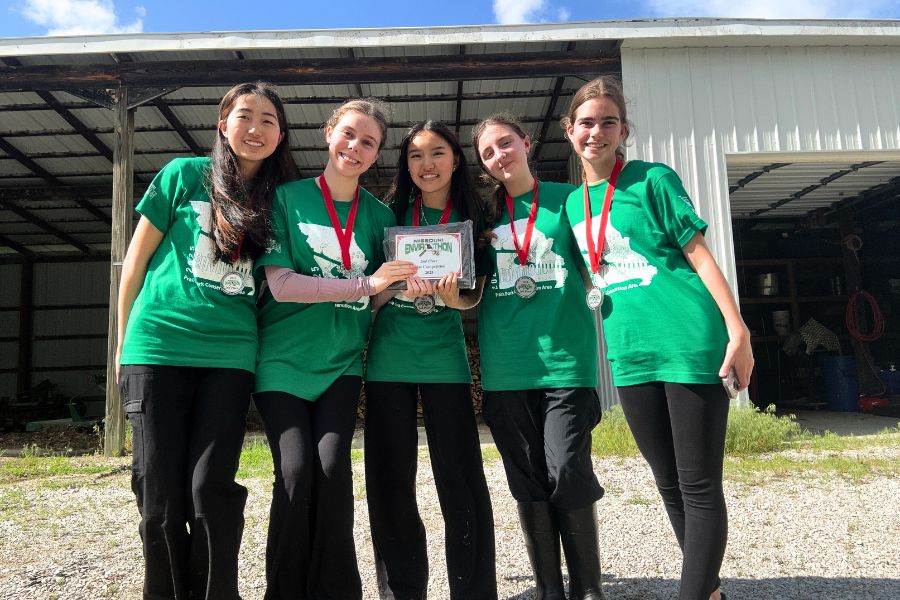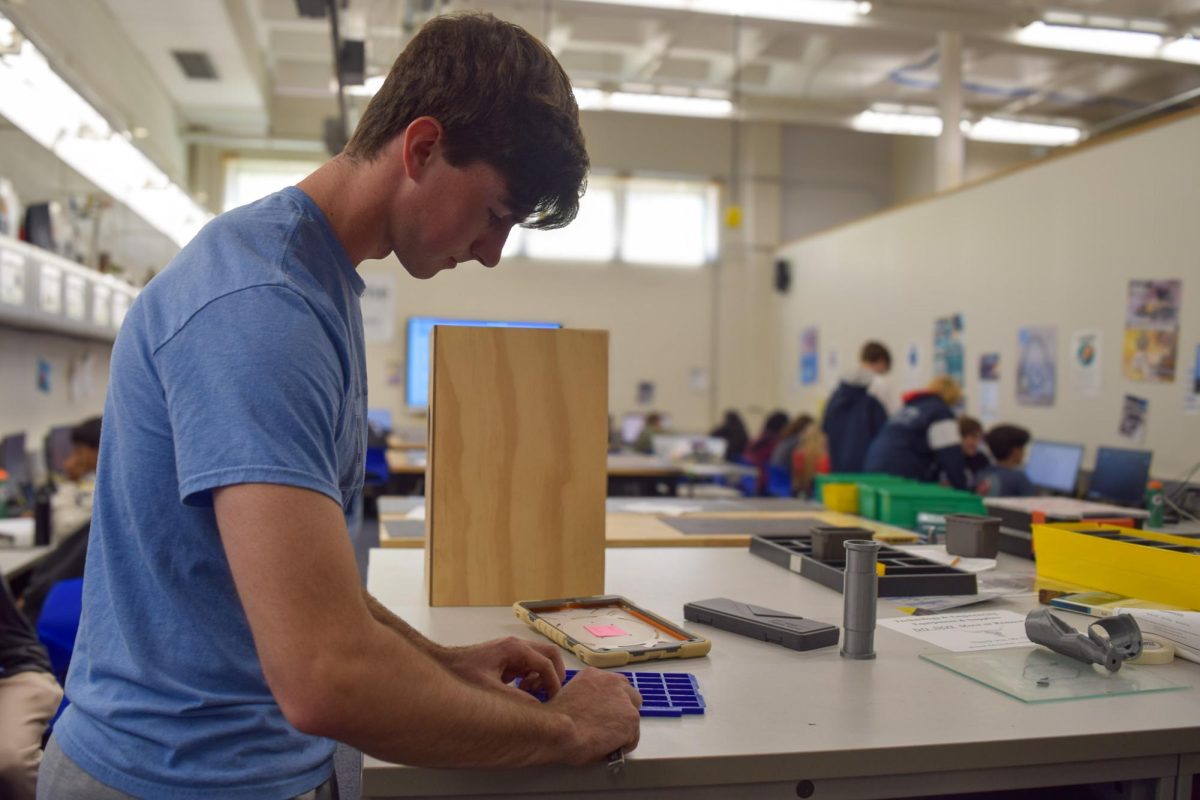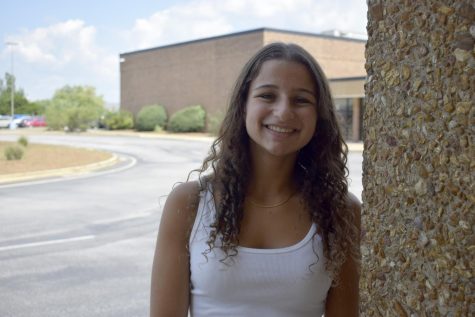Ramadan: a time of fasting, prayer and focusing on your faith. Ramadan is sophomore Rand Al-Hachami’s favorite time of the year and, this year, it is the time she decided to start wearing hijab.
Hijab — a scarf traditionally worn by Muslim women to cover the hair, neck and occasionally face — is more than just a scarf. To Al-Hachami, it is a symbol of faith and resilience.
In 2020, 60-62% of Muslims reported facing Islamophobia, according to the Institute for Social Policy and Understanding (ISPU). This Islamophobia is reflected in the West high community.
“A lot of [Islamophobia] happens behind closed doors. However, my sister got verbally and physically assaulted for wearing a hijab, and I’ve heard countless other stories of that happening here [at West]. I still chose to wear [hijab] because I think that it’s a really big symbol of my faith,” Al-Hachami said. “I’m stronger than anything anybody could try to do to me, and a lot of the people here are all bark, no bite when it comes to these things. The thing about Islam is that we’re peaceful. Our religion preaches peace until it’s time for our defense, so if I find myself in a situation where I’m forced to defend myself, I will have no problem doing so.”
Despite the threat of Islamophobia, Al-Hachami has experienced a relatively positive reaction to her decision.
“[My first-day wearing hijab at school] was alright. I was expecting to face more Islamophobia because I am finally becoming visibly Muslim, but I got some compliments, I got some questions and I enjoyed wearing it altogether. I felt somehow closer to my hijabi friends here,” Al-Hachami said. “Me wearing hijab wasn’t a really big deal to [my family], but my friends did have a big reaction, especially my Muslim hijabi friends here. They were really proud of me, and they encouraged me to do better [in my faith].”
Wearing hijab is a choice left up to the Muslim individual and their relationship with their faith. In the U.S., around 38% of Muslim women always wear hijab in public. Al-Hachami’s mother is part of that 38%, but her sister has decided to not wear hijab anymore due to a variety of reasons, including her safety.

“I think that part of [my sister’s decision to not wear hijab anymore] did have to do with Islamophobia, which is one of the reasons why I felt like I couldn’t wear it. One of the [key principles] in our religion is that if you’re in a situation where your life is threatened or you’re in any kind of danger and someone wants you to denounce your faith in any way, you are allowed to do so,” Al-Hachami said.
Her sister’s past Islamophobic experiences at West delayed Al-Hachami’s decision.
“I found that if there are so many Islamophobic people here, I can’t wear it or I shouldn’t for my own safety. I think that played a part in why she took [her hijab] off. I think it also had to do with her personal history with [the hijab], religious corruption within some of the people that we know and what they had to say about her hijab. She finally got fed up with the stigma and all the bad things surrounding [hijab] that she now doesn’t wear it,” Al-Hachami said.
While the Muslimah does not have the ability to combat Islamophobia completely on their own, Al-Hachami says that there are many things that non-Muslims can do to help and support Muslims. These actions include getting information from reputable sources, being genuinely respectful and being empathetic towards Muslims and Islam as a whole. Additionally, Al-Hachami encourages her peers to stand up against Islamophobic comments, even if they are framed as a “joke.”
“Some of my non-Muslim friends have fasted in solidarity with me for Ramadan. I find that so respectful. It makes me feel heard. It makes me feel seen,” Al-Hachami said. “I hope [non-Muslims] genuinely know how much that means to us.”


![Sophomore Rand Al-Hachami poses for a picture at school, donning her hijab and Zulfiqar sword necklace. Even though Islamophobia is very present, Al-Hachami says she has met a lot of positive reactions concerning her decision to start wearing hijab. “[Hijab symbolizes] positive character traits that Islam promotes, like dependability and honesty,” Al-Hachami said. “Wearing it has made me feel closer to my Muslim friends as well as to my religion in general.”](https://pwestpathfinder.com/wp-content/uploads/2022/05/randfeaturedphoto-900x600.jpg)
![Focused on providing exceptional service, sophomore Darsh Mahapatra carefully cleans the door of a customer’s car. Mahapatra has always believed his customers deserve nothing less than the best. “[If] they’re trusting us with their car and our service, then I am convinced that they deserve our 100 percent effort and beyond,” Mahapatra said.](https://pwestpathfinder.com/wp-content/uploads/2025/10/DSC_0018-1200x800.jpg)
![Sophomore Aleix Pi de Cabanyes Navarro (left) finishes up a soccer game while junior Ava Muench (right) warms up for cross country practice. The two came to Parkway West High School as exchange students for the 2025-2026 school year. “The goal for the [exchange] program is to provide opportunities for both Parkway students and our international exchange students to learn about other cultures, build connections and become confident, capable, curious and caring — Parkway’s Four C’s — in the process,” Exchange Program Lead Lauren Farrelly said.](https://pwestpathfinder.com/wp-content/uploads/2025/10/Feature-Photo-1200x800.png)

![Gazing across the stage, sophomore Alexis Monteleone performs in the school theater. The Monteleone family’s band “Monte and the Machine” has been releasing music since 2012, but Alexis started her own solo career in 2024 with the release of her first single, Crying Skies. “My whole family is very musical, [and I especially] love writing [songs with them],” Monteleone said.](https://pwestpathfinder.com/wp-content/uploads/2025/09/DSC7463-1200x798.jpg)
![Amid teaching a lesson to her AP Calculus BC class, Kristin Judd jokes alongside her students in their funny remarks. Judd has always enjoyed keeping the mood light in her classroom, along with on the volleyball court. “[I enjoy] that side talk where you see [or] overhear a conversation and chime in, or somebody says something funny,” Judd said.](https://pwestpathfinder.com/wp-content/uploads/2025/09/image-1200x730.jpg)
![Eyeing the ball, junior Ella McNeal poses for her commitment pictures at Clemson University. McNeal’s commitment comes after months of contact with top Division 1 soccer programs. “ It has taken a lot to get to where I am, but I know that [what] I've already been through is just the beginning, and I can't wait for what is to come,” McNeal said.](https://pwestpathfinder.com/wp-content/uploads/2025/09/IMG_4926-1200x900.jpeg)


![Senior Adam Zerega stands with senior Dexter Brooks by farm equipment. Zerega often worked with friends and family on his farm. “I've been able to go to my family's farm since I was born. I [spend] at least three weekends a month [on the farm], so I'm there all the time,” Zerega said.](https://pwestpathfinder.com/wp-content/uploads/2025/04/IMG_4872-1200x900.jpg)


Emily Early • May 23, 2022 at 1:45 pm
Great story, Katie!
Tanvi Kulkarni • May 23, 2022 at 12:03 pm
This is really well-written and I’m glad your sharing this story!